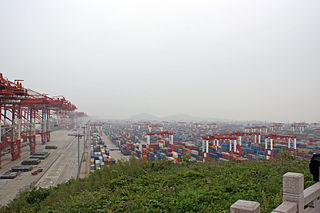 Container port congestion ensues from a wide variety of reasons and is often only a short-term issue, but certain regions in the world appear to be at greater risk of persistent congestion in the longer term, said Drewry.
Container port congestion ensues from a wide variety of reasons and is often only a short-term issue, but certain regions in the world appear to be at greater risk of persistent congestion in the longer term, said Drewry.
Citing its data, the shipping research service said the issue of congestion seems to be not restricted to one part of the world, nor is it solely a problem of emerging or developed markets. It noted that Asia has featured strongly among the main container ports to have congestion issues in recent months, but so have North Africa, North Europe, and the U.S.
Some of the reasons for short-term congestion are strikes (or fear of strikes), adverse weather conditions, and terminal repairs and enhancements.
But in long-term congestion, Drewry said that over the last five years, Tunisia and Venezuela have topped the list, closely followed by India. “Bangladesh and the Philippines are also among the more regular offenders,” it continued.
Projected regional utilization levels provide pointers as to where there is an increased likelihood of port congestion in the medium term.
Drewry predicts that three regions will see double-digit increases in their average regional terminal utilization levels by 2018: Greater China, West Africa, and Southern Africa.
Of these, Greater China is clearly highly significant given the scale of volumes in the region (198 million TEUs in 2013 compared with just 8.4 and 5.4 million, respectively, in the two African regions), said Drewry.
“The sheer size of the Chinese market means that even modest percentage demand growth rates generate large absolute increases in volumes. As a result, capacity has to be added rapidly and usually in very large projects.”
Other regions forecast to see a marked increase in average utilization levels are the West Mediterranean, North Asia, Southeast Asia, and East Coast South America, with increases in the 7 percent to 10 percent bracket.
These regional changes should be seen in the global context where average utilization levels are projected to increase by nearly 8 percent (reaching 75 percent by 2018 compared with 67 percent in 2013).
Added Drewry: “What must also be remembered is that the average regional utilization levels almost always have significant variations at more granular levels (e.g. at the country, port and terminal levels). Certain locations or certain types of capacity (e.g. big ship capacity) can be under significantly more pressure even if the regional average utilization suggests there is nothing to worry about.”
“The higher the projected regional utilization level, the more likely congestion is to be seen at the granular level,” it further said.
It concluded that while short-term port congestion will always be evident in certain places, “in the longer term, several world regions will need to be watched carefully as their susceptibility to congestion appears likely to increase markedly over the next five years.”
Photo: Bruno Corpet




